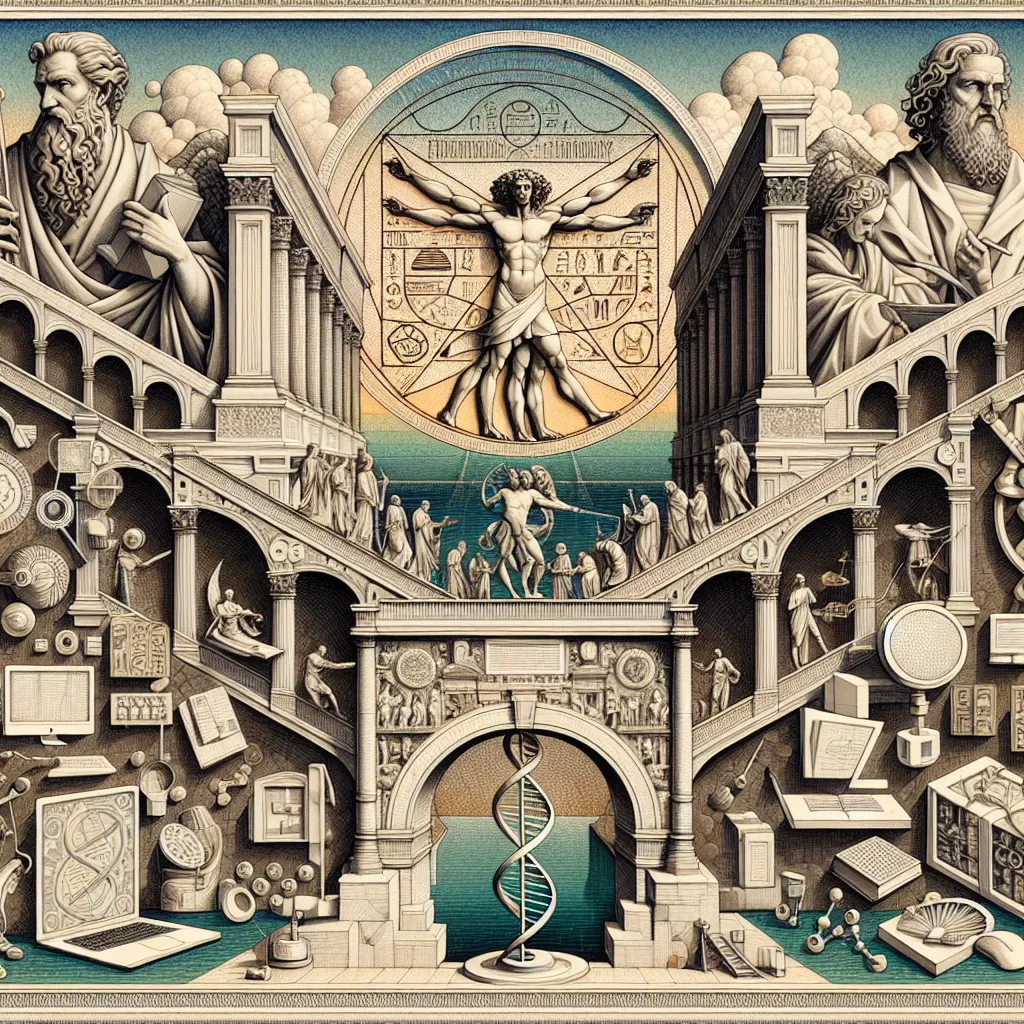
- Published on
- Authors

- Name
- You
Hermetic Philosophy and Modern Science: Bridging the Gap
Introduction
Hermetic philosophy, an ancient system of thought attributed to Hermes Trismegistus, posits that the universe operates through a unified set of principles. Intriguingly, many of these principles echo through the discoveries of modern science—especially in quantum physics and the concept of a holographic universe. How could insights from millennia past find resonance in contemporary scientific thought? Let's embark on a journey to bridge this seemingly vast gap.
As Above, So Below: The Principle of Correspondence
One of Hermeticism's core tenets is the Principle of Correspondence: "As above, so below." This idea suggests a fundamental connection between all levels of reality, from the macroscopic cosmos to the microscopic quantum world.
Quantum Entanglement
In the realm of quantum physics, we encounter the mind-boggling phenomenon of quantum entanglement. When particles become entangled, their states are instantaneously correlated regardless of distance. It’s almost as if they’re mirroring the Hermetic idea that everything is interconnected.
Table 1: Hermetic Principles and Quantum Concepts
| Hermetic Principle | Modern Scientific Concept | Description |
|---|---|---|
| Correspondence (As above, so below) | Quantum Entanglement | Particles remain connected, instantaneously sharing states. |
| Mentalism | Observer Effect | The mind influences the outcome of quantum measurements. |
| Vibrational Reality | Quantum Fluctuations | Reality emerges from fluctuations in quantum fields. |
The Observer Effect and Mentalism
Hermeticism’s Principle of Mentalism states, "The All is Mind." According to this precept, our thoughts influence our reality. Strikingly, quantum physics offers a parallel in the Observer Effect, which posits that the act of observation affects the state of a quantum system. Does the mind indeed co-create reality?
The Holographic Universe and Hermetic Unity
The holographic principle in physics theorizes that our entire universe can be described as a two-dimensional information structure “painted” on the cosmological horizon. This supports the Hermetic ideal of Unity, where the microcosm and macrocosm are reflections of each other, akin to a hologram where each part contains the whole.
Alchemy and Transformation
Hermetic philosophy is often associated with alchemy, the ancient practice of transforming base metals into noble ones. But beyond the literal pursuit of gold, alchemists sought spiritual enlightenment through transformation. Modern science, too, embraces transformation—whether it's the transmutation of elements in nuclear reactions or the potential of genetic engineering to alter life itself.
Conclusion
Whether through the lens of ancient wisdom or modern science, we perceive a shared narrative that all things are interconnected and transformative. Hermetic philosophy and contemporary scientific discoveries together reveal a universe that's profoundly interconnected, where the mind can touch the cosmos, and the smallest particle reflects the grander design.
Further Reading
For those eager to dive deeper, consider exploring the following resources:
- "The Kybalion" by Three Initiates
- "The Holographic Universe" by Michael Talbot
- "Quantum Enigma: Physics Encounters Consciousness" by Bruce Rosenblum and Fred Kuttner
Illuminating the paths of ancient wisdom and modern discovery, we find that the journey to understanding is a shared venture through time and space. As we look to the stars and delve into the quantum realm, we are reminded of the Hermetic adage: As above, so below.
